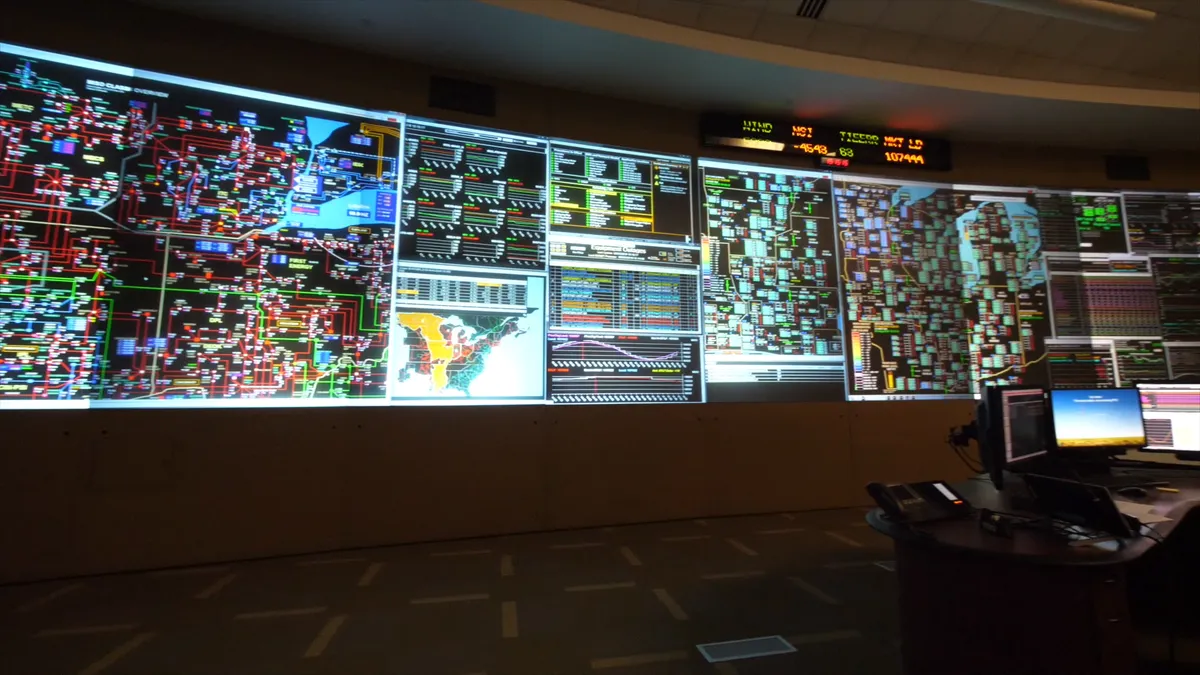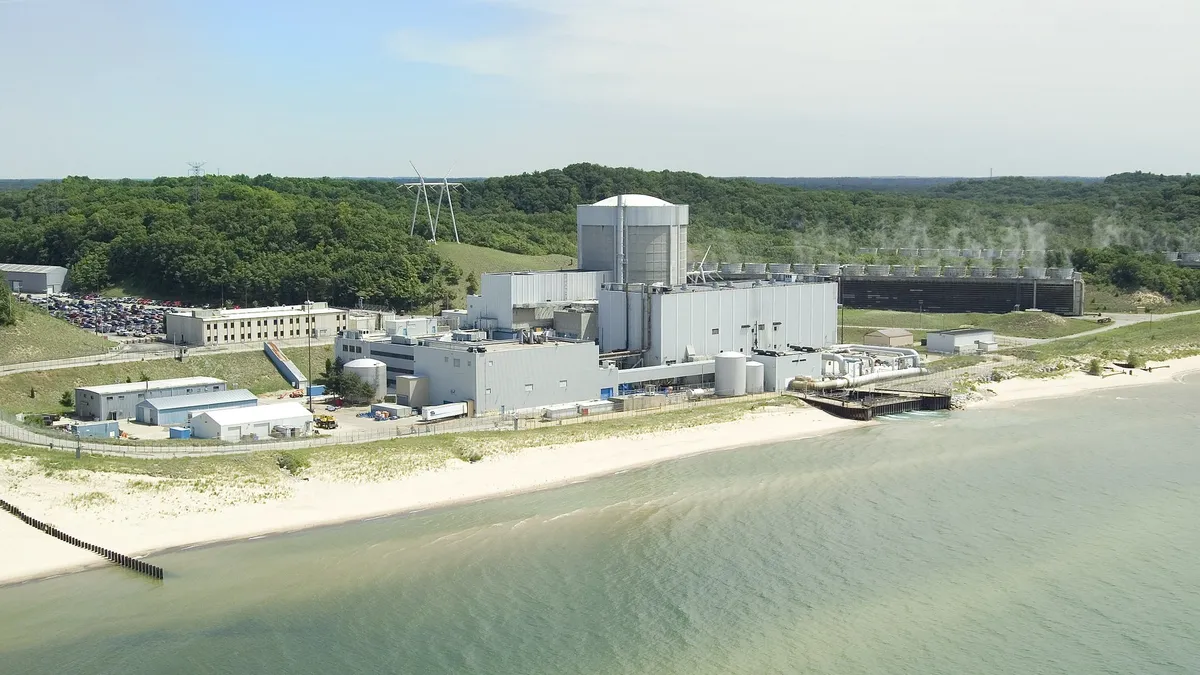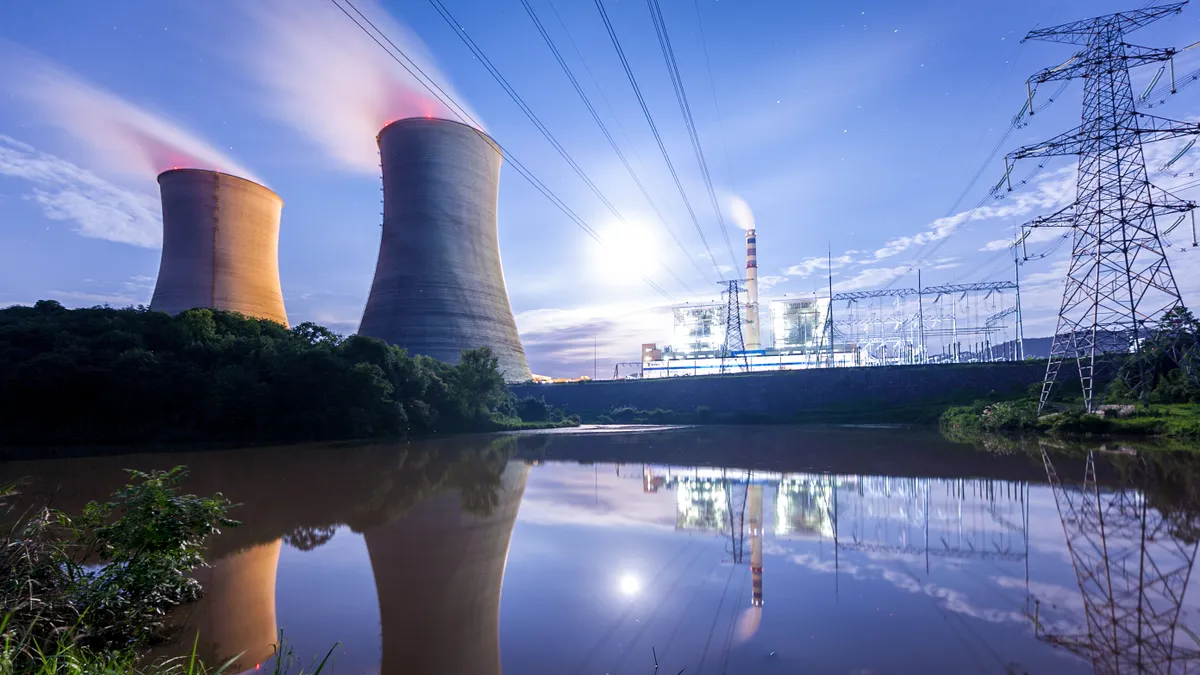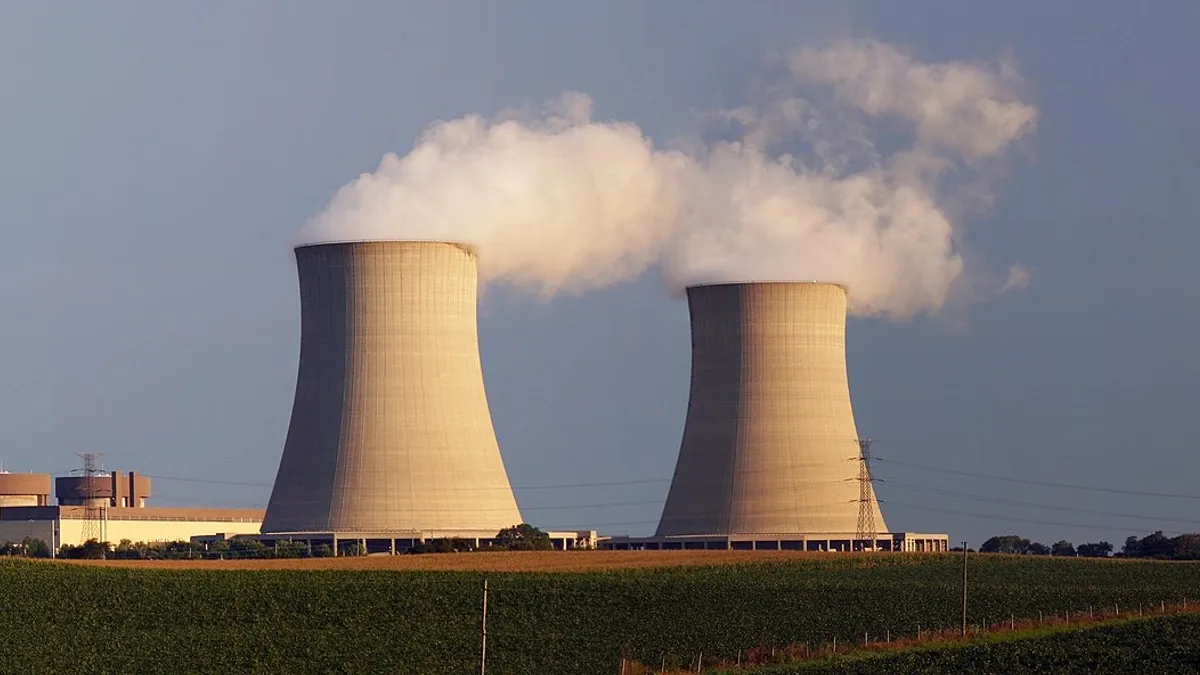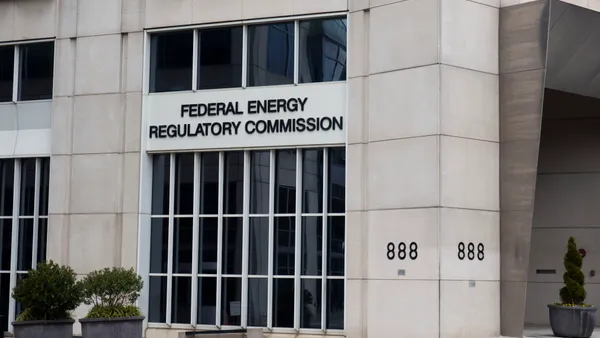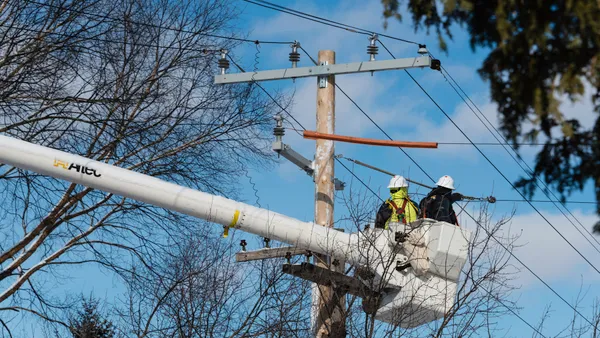At the Edison Electric Institute's annual convention this month, electric utility executives fretted over the fates of their baseload power plants.
Even with the Clean Power Plan held up in court, a number of utility CEOs worried that market dynamics — namely low gas prices, stagnant electricity demand and cheap renewables — would force large central-station plants offline prematurely.
While coal retirements have become commonplace, executives were particularly concerned about their nuclear units. After Exelon announced it would retire two major plants, executives told Utility Dive that continued nuclear closures could make it difficult for the nation to reach its climate change goals.
As it turned out, they hadn’t even heard the kicker yet.
Not a week after the conference concluded, Pacific Gas & Electric (PG&E), one of the largest electricity providers in California, announced it would retire the Diablo Canyon nuclear plant completely by 2025, removing 18,000 GWh of annual carbon-free generation from the grid. In its place, the utility plans to fill the generation gap through reduced energy usage and other carbon-free resources, namely renewables and energy storage.
Whether the utility can make good on that plan — and what it will cost — remains to be seen. Nuclear advocates have jumped on the proposal, taking issue with PG&E’s initial cost estimates and saying the move will end up boosting fossil fuel generation. But no matter how the retirement process unfolds, PG&E’s decision to take the plant offline offers important lessons on the trade-offs posed by renewable energy policies and the utility's strategy in the coming decades.
“We see the percentage of generation in California provided centrally clearly is going to drop,” PG&E CEO Tony Earley told Utility Dive in an interview. “It's a combination of distributed generation [and] community choice aggregation that will reduce the amount of generation that we'll provide but ... those folks are still our customers, and that’s why investing in the grid is so important.”
Renewables prompt nuclear retirement
When Utility Dive spoke to Earley on the sidelines of the EEI convention, PG&E wouldn’t announce their Diablo Canyon retirement plans for another week. But when asked about safety concerns and costs at the plant, the Earley offered a preview of his thinking on the closure.
“Right now [Diablo Canyon] is a big contributor [of carbon-free generation],” he said, “but as we look ahead, as you get to 50% renewables, your nuclear plant is going to run less, so in the future it will be less important.”
“In fact, as you get to the mid-2020s,” he added, “if you're not running your nuclear plant because you've got all these renewables all the time, there may be other tradeoffs to make. You may be able to replace that power.”
That, in a nutshell, describes PG&E’s rationale for closing Diablo Canyon.
Last year, California passed a 50% renewables mandate, which does not include nuclear. As utilities ramp up to that goal, consumers continue to install rooftop solar, and some California cities embrace community choice aggregation (CCA), PG&E forecasted that it would likely not be able to run its nuclear plant continuously, as it does today.
“On cooler spring and fall days you still have to generate from renewables to meet your 50% renewable requirement, because that's the state law,” Earley said on a press call following the June 21 announcement. “There's just not going to be enough need to have to run your nuclear plant.”
Replacing all that generation is sure to take a lot of renewables, storage and efficiency, but PG&E expects bringing all those new resources online would cost less than running Diablo Canyon part-time. Because most of its costs are fixed, reducing the generation output of the plant can raise its per-kWh cost significantly.
“Let's just take a number,” Earley said on the press call. “If the capacity factor drops 50% that effectively doubles the cost per kWh. And when you calculate the cost of the whole package including the cost of renewable energy and all of the other provisions, our conclusion is it's going to cost less as a total package than if you just continued to operate Diablo Canyon.”
Nuclear supporters don’t buy it. In a scathing statement after the retirement announcement, the pro-nuclear group Environmental Progress called PG&E and other parties to the deal “corrupt” and said “the proposal is based on a big lie — that Diablo can be closed without increasing fossil fuel use, methane emissions and carbon emissions.”
If its retirement proposal is approved by the California Public Utilities Commission, PG&E would promise to obtain 2,000 GWh from efficiency by January 2025 and issue requests for offers for 2,000 GWh per year of greenhouse gas-free energy resources or efficiency by 2020.
Critics say that won’t be enough to fill the gap left by Diablo Canyon, meaning fossil fuel resources, likely natural gas, will fill the breach. In response, a PG&E spokesperson pointed to the preamble of the closure proposal, where the utility notes that factors like adoption of efficiency goals, rooftop solar growth, enhanced energy storage and potential expansion of CCAs could all affect the load profile in the PG&E region.
“Given these and other uncertainties, [PG&E and other signatories] cannot, and it would be a mistake to try to, specify all the necessary replacement procurement now,” the joint proposal reads. “[W]hat the Parties have proposed in the Joint Proposal are significant and appropriate steps in the journey.”
Managing the distributed resource transition
Controversy over the Diablo Canyon retirement aside, PG&E’s plan to replace it will require significant investments in both the transmission and distribution system. The utility is already at the forefront of the transition to a more flexible, distributed grid, with nearly a quarter million rooftop solar installations in its service territory.
“The system for generation has become far more complex,” Earley said in his interview at EEI. “Back when the system was built we just jammed a bunch of power from the plants into it and any good electrical engineer could follow the flows. Now the flows are going every which way and it changes with the time of day.”
In 2015, Californians installed nearly 3.3 GW of rooftop solar, and installations have kept pace since regulators extended retail rate net metering until 2019 in a January decision. Earley said that PG&E hooks up a new rooftop solar unit “about every 6 minutes.”
But, he added, the boom in distributed generation is creating inequities in the rate structure. California utilities fought against the preservation of retail net metering, arguing rooftop solar customers do not pay their fair share for grid upkeep. In a commission filing this spring, PG&E estimated the cost shift from solar customers to the rest of the rate base could reach $5 billion a year by 2025.
Solar companies contest that line of argument, saying rooftop systems deliver benefits to the grid that utilities won’t acknowledge. Earley said there could be room to compromise. Utilities and solar advocates in New York recently agreed on a net metering replacement tariff, and the CEO said there could be desire for a similar deal when the issue comes up again in California in 2019.
“I think there will be a major effort to come up with a win-win solution,” he said. “We don’t want to be at odds with the solar suppliers. In fact, the large solar suppliers who do the universal, utility-scale projects, we’ve got great relationships with them, and I think we ought to be able to work out a common ground going forward to have a sustainable rate structure for the private rooftop.”
Even so, Earley’s rate proposals may not win him allies in the installer community. He dismissed the notion that distributed solar resources deliver more benefits to the grid than the costs they impose, and called for a rate structure with more emphasis on recovering fixed costs.
“I think the principal is less dependence on volumetric rates, because the services we provide are not necessarily reflected in the value,” he said. “So take the customer who has a solar unit on their roof. They are some of the heaviest users of the grid, but if they perfectly net out of their use … under a volumetric charge they're paying zero, but they're using the grid each day.”
Most of the utility’s costs are fixed, Earley said, so it makes sense to increase that portion of a customer’s bill.
“We’ve got to look at a way to reflect that [grid] usage in any billing structure we develop,” he said. “Could be a flat monthly charge, could be a demand charge — there are different ways to do it.”
DERs and utility revenue models
While PG&E and the other California investor-owned utilities have tussled with third-party DER installers in the past, new revenue models being developed by state regulators could open opportunities for utilities to make money off their deployment.
In April, California PUC Commissioner Mike Florio issued a draft proposal to align utility ratemaking practices with distributed resource deployment. Under the plan, currently being reviewed by the full CPUC, utilities could earn a regulated rate of return when they defer or cancel traditional grid investments through the deployment of third-party distributed resources, demand response, or efficiency measures. The idea is to give utilities the same incentive to deploy cost-effective resources from DER suppliers as they would if they built their own central station plant.
Those incentives have taken on an added importance for PG&E in the wake of the Diablo Canyon announcement. While cool to the specifics of Florio’s proposal, Earley agreed with regulators that new revenue incentives are needed.
“They are [as of yet untested], and obviously when you’re making major changes like that you have to be careful,” he said. “We're submitting comments on Commissioner Florio's proposal, and while that may not be the right proposal, we do need to innovate in the rate structure.”
One way new revenue models could help enhance the distribution grid is through energy storage. Under a 2013 law, California IOUs must add 1.3 GW of storage by 2020, and Earley said PG&E is using its pilot deployments under the mandate to figure out which type of storage works best, and where.
“[It is] still not economic and we're still trying to figure it out,” he said. “Do you want grid scale storage? Do you want local, circuit-scale, or customer scale? So, we'll spend the next couple of years working through that model.”
Beyond 2020, allowing utilities to earn a rate of return for deploying storage to defer upgrades to the bulk power system could help crystallize where it offers the highest value on the grid.
“I think storage will become a major part of the equation going forward,” Earley said.
Working within the system
Looking at PG&E today — even with its recent safety issues and CPUC corruption scandals — the company is far from the financial situation it was 15 years ago, when it filed for bankruptcy in the wake of the California energy crisis.
The utility, critics note, still faces some deep internal issues. Last year, as he assessed PG&E a $1.6 billion fine for wrongdoing related to the 2010 San Bruno pipeline explosion, CPUC President Michael Picker said he was concerned the 9.7 million-customer utility may be “too big to operate safely.” That explosion killed eight people and Picker was only in a position to make his statement because the last CPUC president, Michael Peevey, resigned in disgrace over an email scandal with PG&E executives stemming from the tragedy.
But even with those difficulties, investors seem confident in PG&E and its relationship with regulators. In the past five years, the company stock has steadily risen from the mid-$40s to above $60 per share and rating agencies largely look favorably on the company’s creditworthiness. Earley credits a renewed focus on the fundamentals since he joined the company from DTE Energy in 2001.
“Safety has been a big push for us, and we've really measured ourselves against the best in the industry, so a lot of benchmarking,” he said. “We’ve seen tremendous improvement in the quality of the service we provide our customers.”
But in the same breath, Earley praised the California regulatory model, which he said allows utilities to “move ahead on a whole bunch of issues, including the major issue — dealing with climate change.”
Unlike many states which favor incentives for utility behavior, California more often resorts to mandates — telling utilities what to do and imposing consequences if they fail to deliver. While Earley said that approach has likely made costs higher for California consumers, regulators have also “really enabled the utilities to drive some of these environmental issues.”
Still, there are a few things Earley would change if he had a chance. In a particularly apt comment during the interview at the EEI conference, he mused about policy choices that could keep nuclear generation on the system.
“Many times in past decades we've tried to get things like nuclear included in the definition of renewables ... because if you don’t include it, it's lower in the dispatch order, so you may end up being in a position where your nuclear plant does not dispatch because you’ve got so many renewables on the system,” he said. “So, if I had to do it over again, I'd go back and say let's include everything in the definition.”
Even better than that, he said, would be to ditch the mandates on specific resources and implement an outcome-oriented climate policy, such as a mandate for zero-greenhouse gas resources or a more ambitious price on carbon.
“I would much prefer a low carbon mandate as opposed to a renewables mandate and California has sometimes been very prescriptive even in the renewables space, saying you got to have a certain amount of biomass, etc.,” he said. “I'd prefer just to go out for bids and say let's take a look at the cheapest source of GHG-free electricity.”
At this point, Earley realizes California is unlikely to pivot in its approach, leaving him and other sector leaders to strategize on how to best decarbonize with the policies they’re given. That flexibility, in a word, could be both the rationale for the nuclear closure and a strategy for future growth.
“We've figured out ways to work in the California system pretty well,” Earley said.










